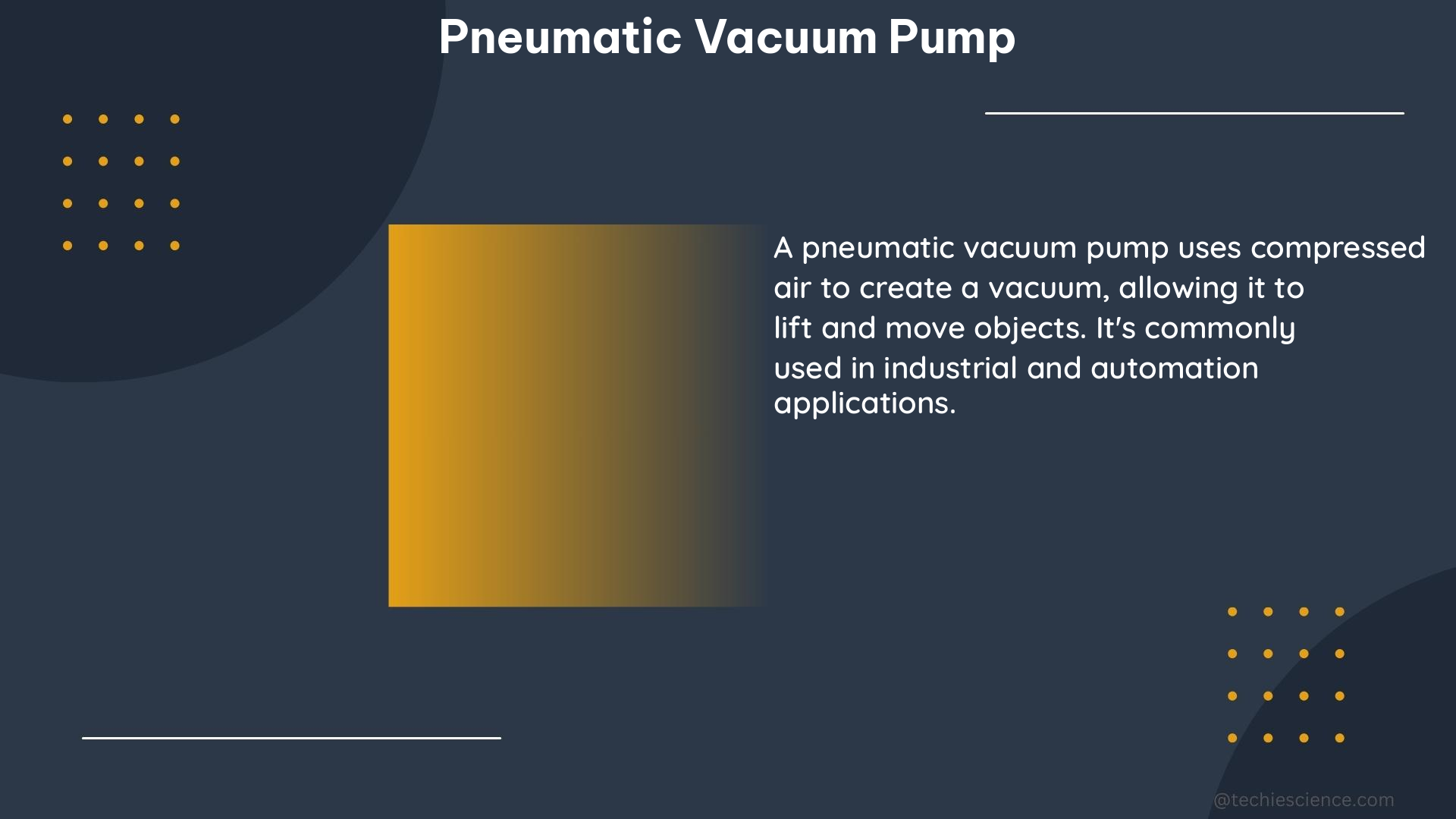Pneumatic vacuum pumps are air-powered machines designed to create a vacuum by removing molecules from a closed chamber. These versatile devices are widely used in various industrial applications, including material handling, packaging, and food processing. Understanding the intricacies of pneumatic vacuum pumps is crucial for selecting the right equipment and ensuring optimal performance.
Understanding Vacuum Levels and Measurement
Vacuum levels are generally classified into three categories: rough, medium, and high vacuum. These levels are measured in units such as Torr, millibar, microns, inches of mercury, Pascals (Pa), and psi.
- Rough Vacuum: Theoretically, a rough vacuum can reach up to 1 millibar or roughly 29.8 inches of mercury. However, most industrial applications do not require full vacuum, and the term “full vacuum” is often used loosely to mean something above 29 inches of mercury.
- Medium Vacuum: Medium vacuum typically ranges from 1 millibar to 1 Torr, or approximately 29.8 inches of mercury to 0.75 inches of mercury.
- High Vacuum: High vacuum is generally defined as the range below 1 Torr, or 0.75 inches of mercury.
It’s important to note that the specific vacuum level required for an application can vary depending on the process and the desired outcome.
Factors Affecting Pneumatic Vacuum Pump Performance

Pneumatic vacuum pumps are part of a larger system, and their performance can be influenced by various factors, including:
- Atmospheric Pressure: Changes in atmospheric pressure can affect the pump’s ability to create and maintain the desired vacuum level.
- Temperature: Ambient temperature can impact the pump’s efficiency and the viscosity of the air or gas being handled.
- Backpressure: Resistance to the flow of air or gas can create backpressure, which can reduce the pump’s performance.
- Air Leakage: Leaks in the system can compromise the pump’s ability to maintain the desired vacuum level.
To accurately assess the condition of a pneumatic vacuum pump, it is essential to examine its performance curve, which can provide insights into the pump’s health, air loading vs. pressure, and potential damage.
Selecting the Right Pneumatic Vacuum Pump
When choosing a pneumatic vacuum pump, it is crucial to consider the specific requirements of the application, such as:
- Vacuum Technology: Determine whether the application requires constant or intermittent vacuum.
- Temperature: Ensure the pump can handle the operating temperature range of the application.
- Moisture, Particulates, and Process Residues: Evaluate the presence of moisture, particulates, or process residues that may affect the pump’s performance and lifespan.
Making the wrong pump choice can lead to process inefficiencies, energy waste, and even safety hazards. To avoid these issues, it is essential to carefully evaluate the application’s requirements and select the appropriate pneumatic vacuum pump.
Measuring Pneumatic Vacuum Pump Performance
One method for measuring the performance of a pneumatic vacuum pump is the use of a test manifold with critical flow orifice plates. This approach, despite its disadvantages, can provide a simple and reliable way to measure vacuum pump performance on-site.
The test manifold typically includes the following components:
- Vacuum Gauge: Measures the vacuum level in the system.
- Flow Meter: Measures the air or gas flow rate through the pump.
- Critical Flow Orifice Plates: Restrict the flow of air or gas to create a known pressure drop, allowing for the calculation of the pump’s flow rate.
By using this test manifold, you can gather valuable data on the pump’s performance, such as its air loading vs. pressure characteristics, which can help in evaluating the pump’s condition and identifying potential issues.
Maintaining Pneumatic Vacuum Pump Efficiency
To ensure the long-term efficiency and reliability of a pneumatic vacuum pump, it is essential to implement a comprehensive maintenance program. This may include:
- Regular Inspections: Regularly inspect the pump for signs of wear, damage, or deterioration.
- Preventive Maintenance: Perform scheduled maintenance tasks, such as filter changes, lubrication, and seal replacements, to prevent issues before they occur.
- Performance Monitoring: Continuously monitor the pump’s performance using tools like the test manifold mentioned earlier to identify any changes or potential problems.
By proactively maintaining your pneumatic vacuum pump, you can extend its lifespan, improve its efficiency, and minimize the risk of unexpected downtime or process disruptions.
Conclusion
Pneumatic vacuum pumps are essential components in a wide range of industrial applications, and understanding their intricacies is crucial for selecting the right equipment and ensuring optimal performance. By considering factors such as vacuum levels, environmental conditions, and system requirements, you can make informed decisions and maximize the efficiency of your pneumatic vacuum pump. Remember to regularly monitor and maintain your pump to keep it running at its best.
Reference:
– Tracking Vacuum Pump Down Time
– How to Choose a Vacuum Pump
– Measuring the Performance of Pneumatic Vacuum Pumps

The lambdageeks.com Core SME Team is a group of experienced subject matter experts from diverse scientific and technical fields including Physics, Chemistry, Technology,Electronics & Electrical Engineering, Automotive, Mechanical Engineering. Our team collaborates to create high-quality, well-researched articles on a wide range of science and technology topics for the lambdageeks.com website.
All Our Senior SME are having more than 7 Years of experience in the respective fields . They are either Working Industry Professionals or assocaited With different Universities. Refer Our Authors Page to get to know About our Core SMEs.